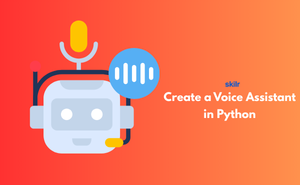👇 CELEBRATE CLOUD SECURITY DAY 👇
00
HOURS
00
MINUTES
00
SECONDS

Python Voice Assistant Development focuses on building smart applications that respond to human speech using Python. It combines speech recognition, natural language understanding, and voice output to create assistants capable of performing tasks like reminders, information retrieval, and device control.
This certification equips individuals to create functional voice assistants from scratch. Candidates learn to process spoken commands, interact with external APIs, automate workflows, and develop user-friendly voice applications suitable for personal or professional use.
This exam is ideal for:
Domain 1 - Introduction to Python Voice Assistants
Domain 2 - Python Fundamentals for Voice Assistants
Domain 3 - Speech Recognition in Python
Domain 4 - Text-to-Speech Implementation
Domain 5 - Natural Language Processing Basics
Domain 6 - API Integration for Voice Assistants
Domain 7 - Task Automation and Workflow Design
Domain 8 - Error Handling and Debugging
Domain 9 - Deployment and Real-World Applications
Domain 10 - Security and Best Practices
Industry-endorsed certificates to strengthen your career profile.
Start learning immediately with digital materials, no delays.
Practice until you’re fully confident, at no additional charge.
Study anytime, anywhere, on laptop, tablet, or smartphone.
Courses and practice exams developed by qualified professionals.
Support available round the clock whenever you need help.
Easy-to-follow content with practice exams and assessments.
Join a global community of professionals advancing their skills.
Yes, candidates learn to use APIs for weather, news, email, and task automation.
Yes, basic to intermediate Python programming skills are recommended.
Yes, including libraries, audio input, and converting speech to text.
Python developers, AI enthusiasts, software engineers, and hobbyists interested in voice technology.
Yes, including libraries, voice customization, and multi-language support.
Yes, including data privacy and safe API usage.
It enhances opportunities in AI, voice automation, software development, and IoT.
Yes, candidates can develop assistants for reminders, emails, searches, and more.
Voice application developer, Python developer, AI/ML engineer, IoT developer.
Yes, candidates practice building functional voice assistants for practical tasks.
Yes, candidates learn to manage voice input errors and optimize performance.
Yes, voice assistants can interact with IoT devices and home automation.
Yes, including running locally and cloud-based deployment options.
Yes, with basic Python knowledge, beginners can follow the modules.
Yes, basic NLP concepts for understanding and responding to commands.